I can’t even believe it’s almost winter already, but here we are. While it’s not technically winter yet, it has been quite cold in our neck of the woods, and it’s supposed to stay that way for a little while. Over the past several weeks we’ve cleaned up the garden, harvested what we could, and put the rest of the plants into a sort of a winter hibernation mode. Because we are renting (we bought a house!), we have quite a few perennial plants in pots, and we intend to take them with us when we move. Joel has worked really hard to propagate many of these from root cuttings, so we are trying to take good care of them so that they will be successful in the future. Here I will talk about 5 ways to protect potted plants in winter, as sometimes it takes a bit of creativity to keep them happy and alive in the cold weather.
Want to save this post for later?
5 Ways to Protect Potted Plants in Winter
Potted plants can be tricky, mainly because their roots are much more exposed to the elements. The earth holds a pretty constant temperature, so a plant or tree that is in the ground will have a lot more winter hardiness than the same plant that is in a pot. A pot will freeze solid long before the earth gets a hard freeze.
Granted, plants do have varying levels of cold hardiness so that is one thing to consider, along with how cold it gets where you live. We are lucky in that we rarely get hard freezes, but it does go below freezing quite often. Just remember that what works for us might not be an option for you if you live in a super cold climate, but you can probably adapt some of these ideas to your own needs.
Bring Potted Plants Inside
This may seem a little bit obvious, but the first thing you want to do is assess each plant and determine weather or not it should stay outside at all in the winter, depending on its hardiness and your climate. It’s important that these plants still get decent sunlight, however, so make sure to put them in a sunny window. We brought our jade plant inside, which is a succulent and therefore not very frost tolerant, as well as our turmeric plant.
The cage around it is to further protect it from Cosmo the Kitten, who likes to eat and play with things like plant leaves. This is our first time growing turmeric, so it’s a bit of an experiment, but we’ll see what happens! It is a tropical plant, which is why it needs to be inside and in a very sunny window. Hopefully someday we’ll get to harvest some awesome turmeric roots!Cover Potted Plants with Mini Greenhouses
For plants that you want to keep outside, but are still not very frost hardy, you may want to construct mini greenhouses, hoop houses, row covers or cold frames to go over them. Think small, and use what you have. Joel made this cool little movable greenhouse out of scrap wood and plastic.
These can be simple frames covered with plastic like this one, glass topped boxes, or a lean to against a south facing wall. Even old and cracked fish aquariums overturned will work. Use your imagination and scavenge whatever you can!Bury Potted Plants in the Ground
If you have potted perennials that are awaiting their permanent home in the ground, you can bury them, pot and all, in a raised bed, mound (like a permaculture swale bed), or anywhere in the soil. This will take advantage of the relatively constant temperature of the ground.
Once you dig down a few feet into the soil the temperature remains a constant 55°F, no matter the season or above ground air temperature. This is mainly due to the fact that the earth creates thermal mass in its sheer existence and size. Thermal mass is the idea that the greater mass or surface area that an object encompasses, the more stable the temperature of that mass. So take advantage of the thermal mass of the earth and bury potted plants in the soil.
This works even in a raised bed, maybe not to the same degree, but it still gives some buffer from the cold on the roots of the plants. We did this with most of our potted herbs, like rosemary, sage, chives, oregano and thyme.
Mulch, Mulch, Mulch
Yes mulch! Cover the tops of your pots with leaves and straw or whatever other organic material you may have. Surround the pots with them if need be. Mulch is the equivalent of a down comforter for your plants. It mediates the outside temperature from penetrating the soil. It slowly decomposes, and in doing so creates heat, similar to a compost pile. Mulch is great for plants in so many ways, there’s really no reason not to do it. What else are you going to do will all of those fall leaves, anyways?
Create Wind Breaks and Heat Sinks
In the winter in most parts of the northern hemisphere, cold winds come from the north and the most sunlight comes from the south. The idea is to block the cold winds and capture or reflect the warm southern sun. This can be accomplished with one structure; a wall. Whether it’s the south facing wall of your house, garage, or fence, place a wind proof barrier between your plants and the north.
If this barrier is thick, heavy, and massive, it will serve another purpose as thermal mass, or a heat sink. It will not only block the northern blowing winds, but absorb the warm solar exposure on the southern side and reflect that back onto your plants. It will also act to mediate the surrounding temperature and limit sharp temperature fluctuations. Examples of barriers would be rock outcroppings, stone walls, big clay pots, cinder blocks, or even a pile of bricks or tiles. These all contain thermal mass, and when placed correctly in relation to your plants, will provide benefits to help your plants survive colder temperatures.
That’s it for my 5 ways to protect potted plants in winter. I’m sure there are many more ways, but these are the main ones that stuck out to Joel and I. He helped me write this post, as he is the main gardener and permaculturist in this house. I hope these tips help you keep your precious plants alive this winter! Let me know if you have any other cool ideas!Winter Gardening
Just because it’s winter doesn’t mean there aren’t gardening tasks you can be doing!


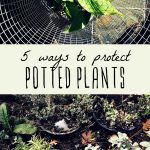
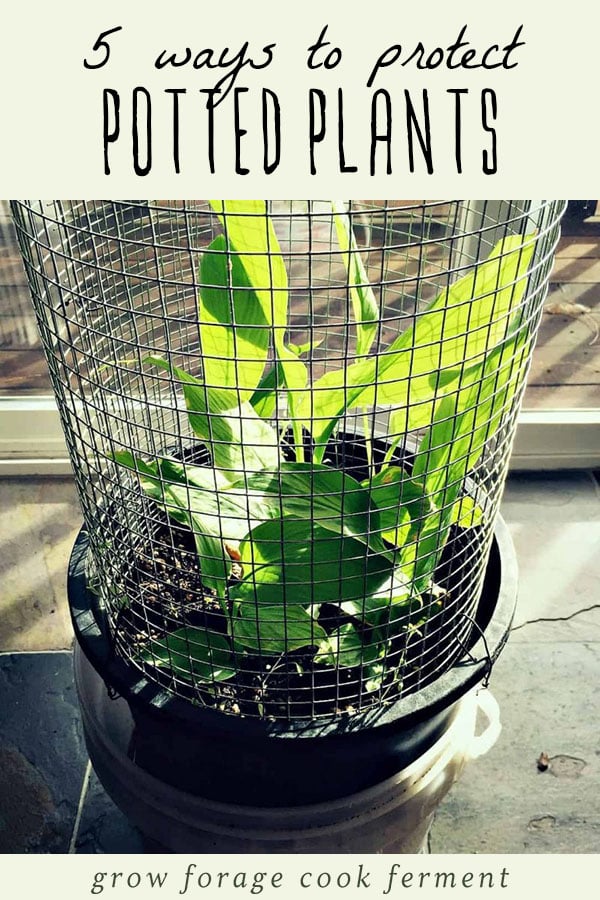

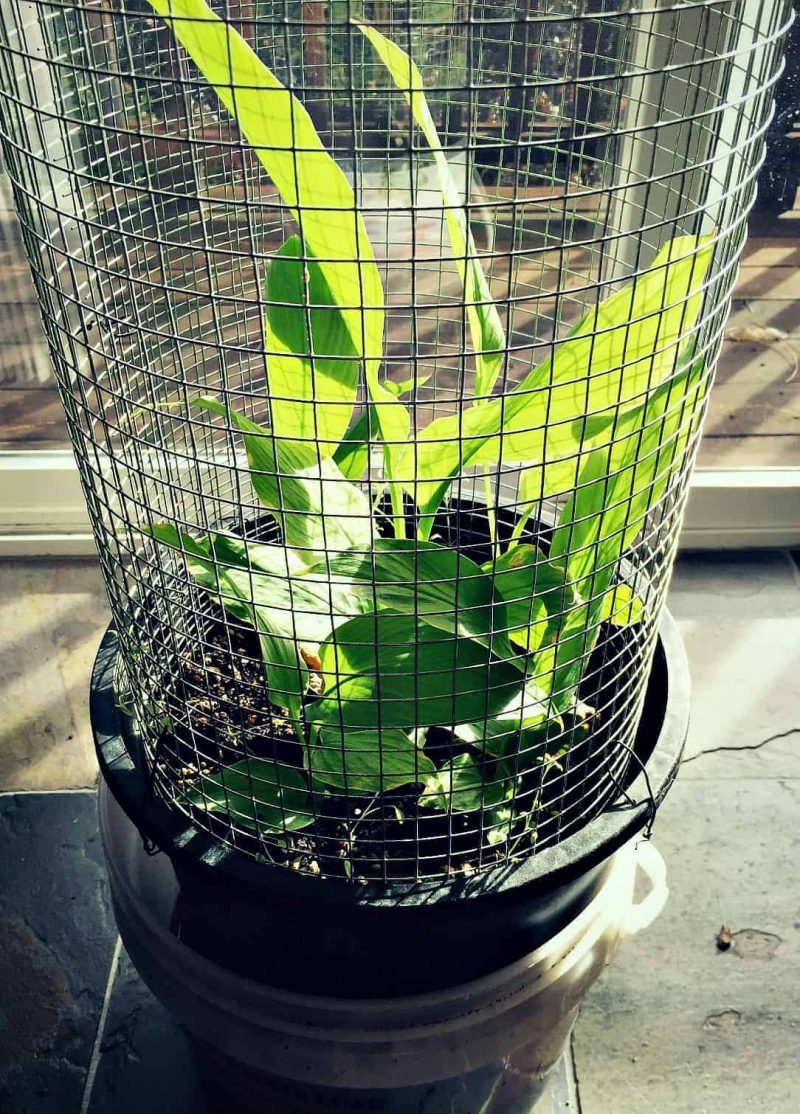
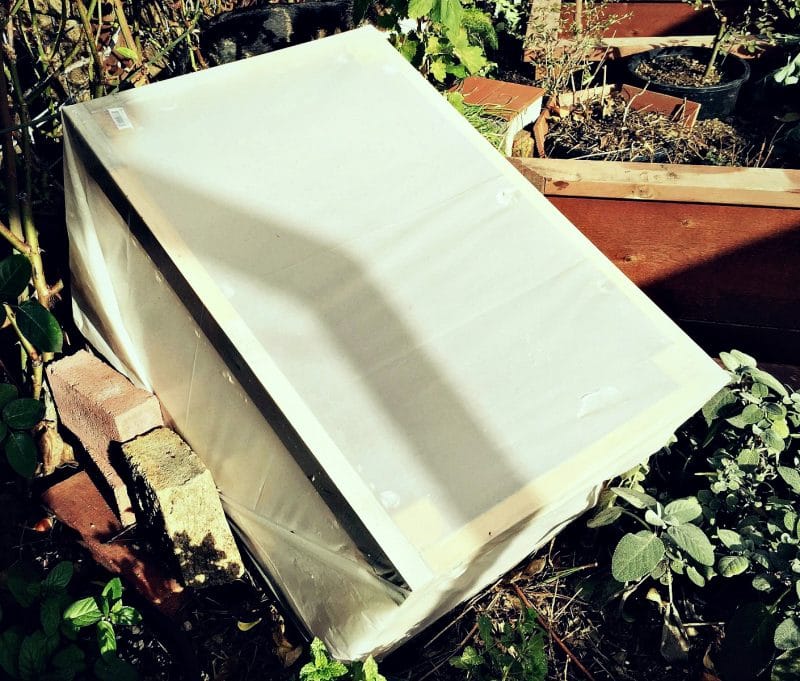
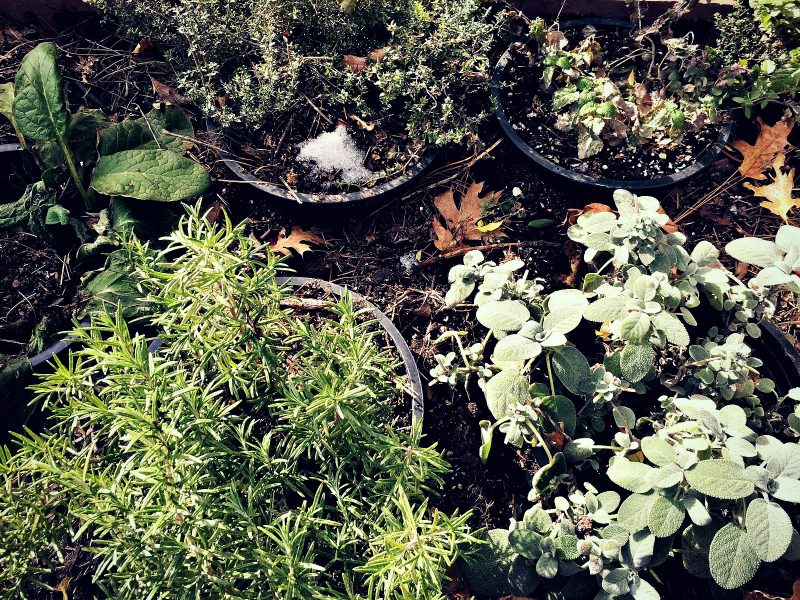
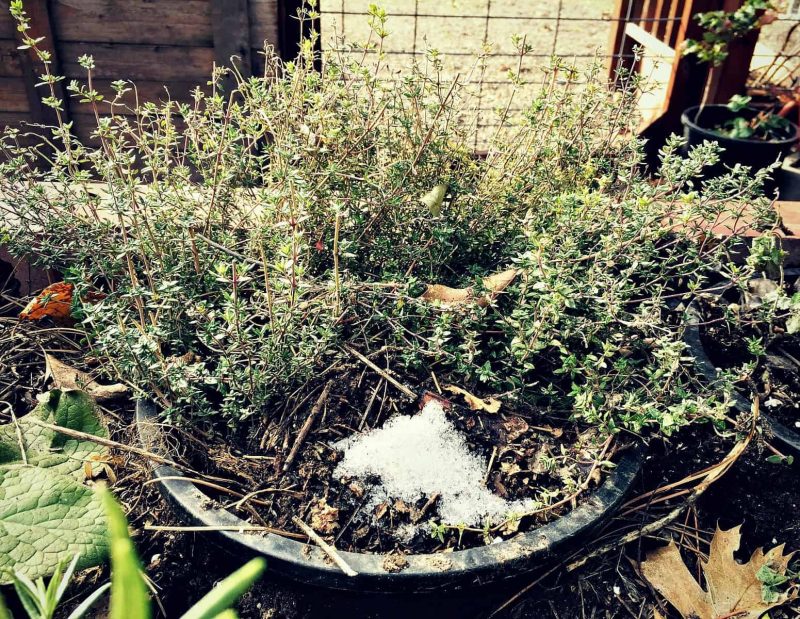
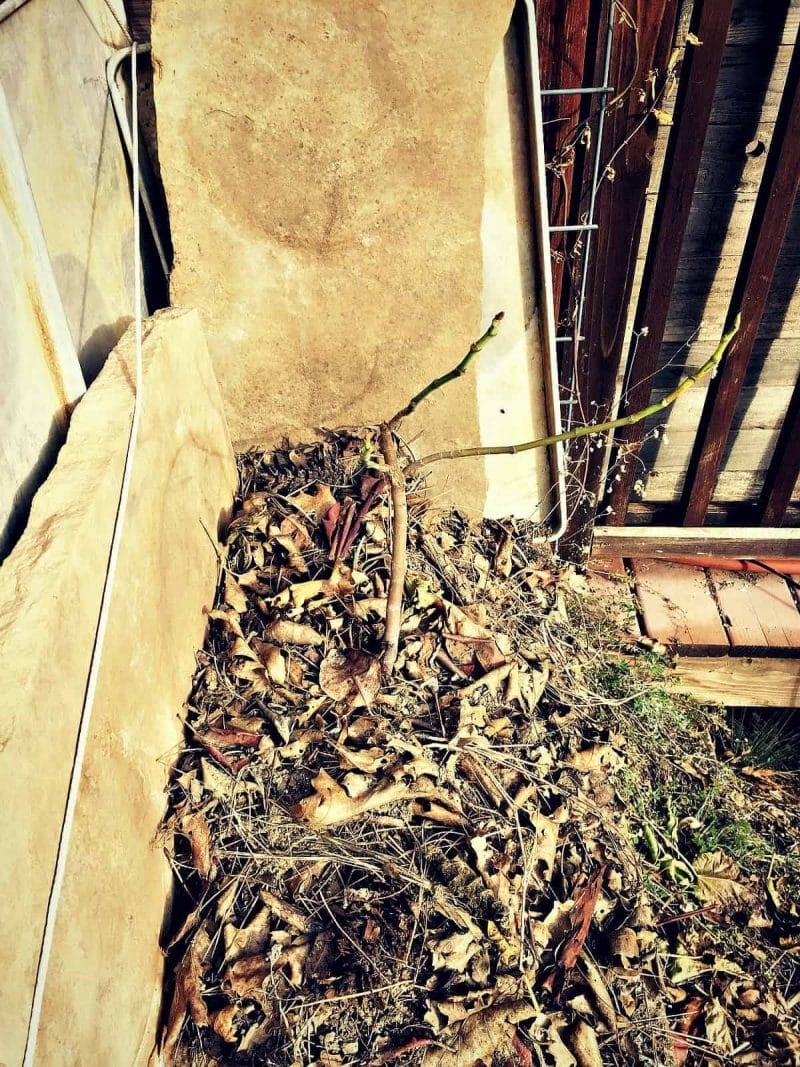
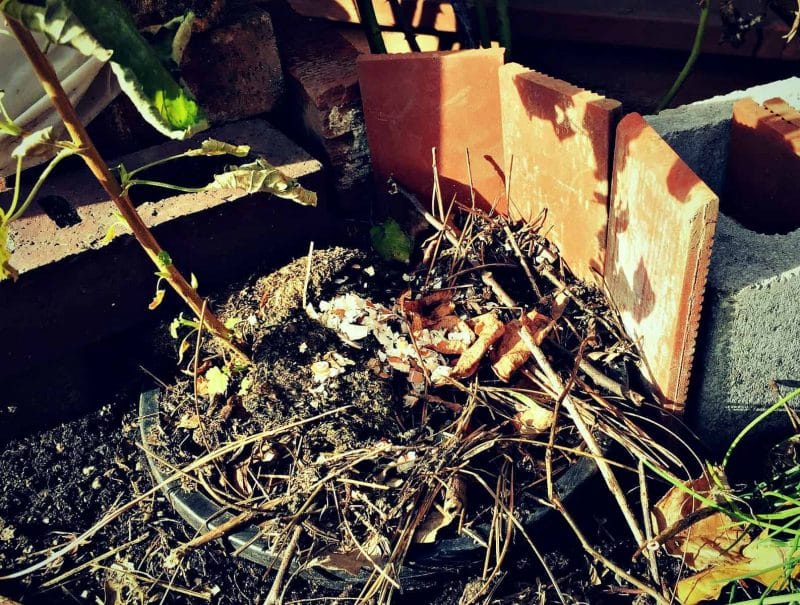

Excellent advice, but want to add a reminder of something I have read on other sites: Folks in northern climates should never just move their potted plants to a southern-facing space without building an adequate heat sink and wind break, as you wisely advised. Exposing unprotected pots to the sun’s warmth in the day and then sub-freezing or subzero conditions at night causes excessive temperature fluctuation and can result in root death.
thank you, all good info. really like that you encourage using whatever is available, be creative instead of going out to buy advertised products. with the volume and variety of my plants i will will probably use all 5 methods. maybe add Christmas lights – old ones provide some heat.
This is one of the biggest reasons why I grow my Citrus Trees in pots! Where I live, we get harsh winters and as such, I can move my citrus trees to the side of my house that gets the most sun at any given stage in the winter and ensure they stay alive! Its the biggest advantage of any plant grown in containers, is the ability to move and change with the seasons
Thank you! I think I’ll bury my rosemary and lavender pots in the dirt mound left from our potatoes. The other herbs are in a garden but these two I like to move around during mosquito season to help keep them away from me when I’m outside.
Good information Colleen! I am anxious to see what is going on with our plants at home.